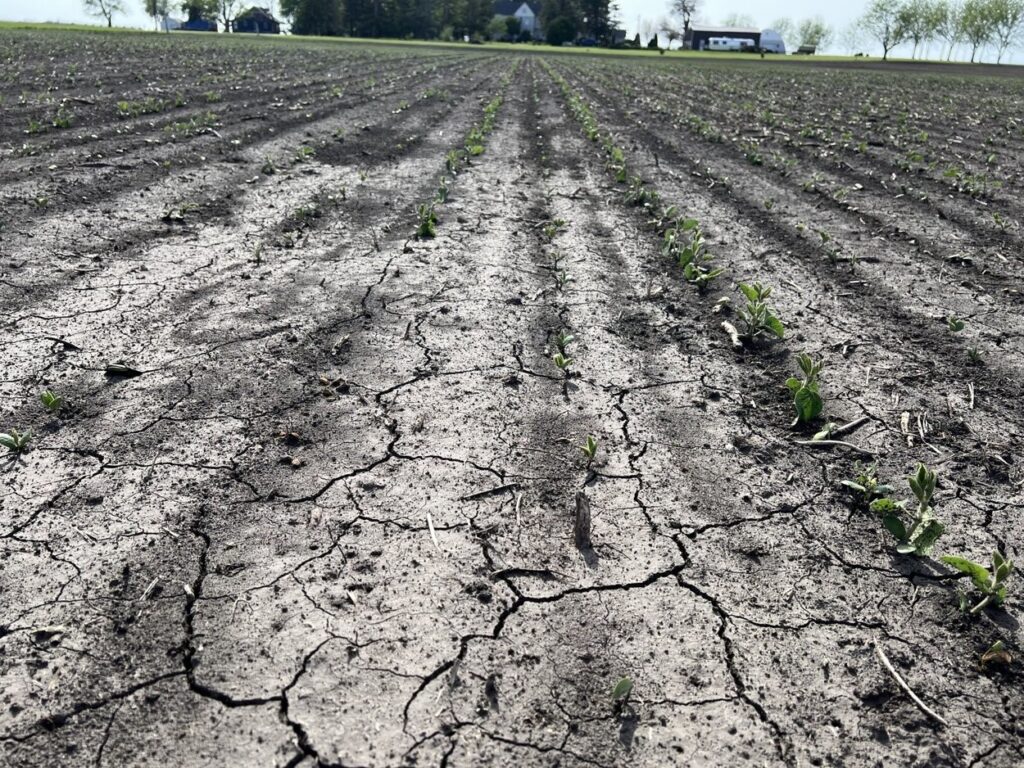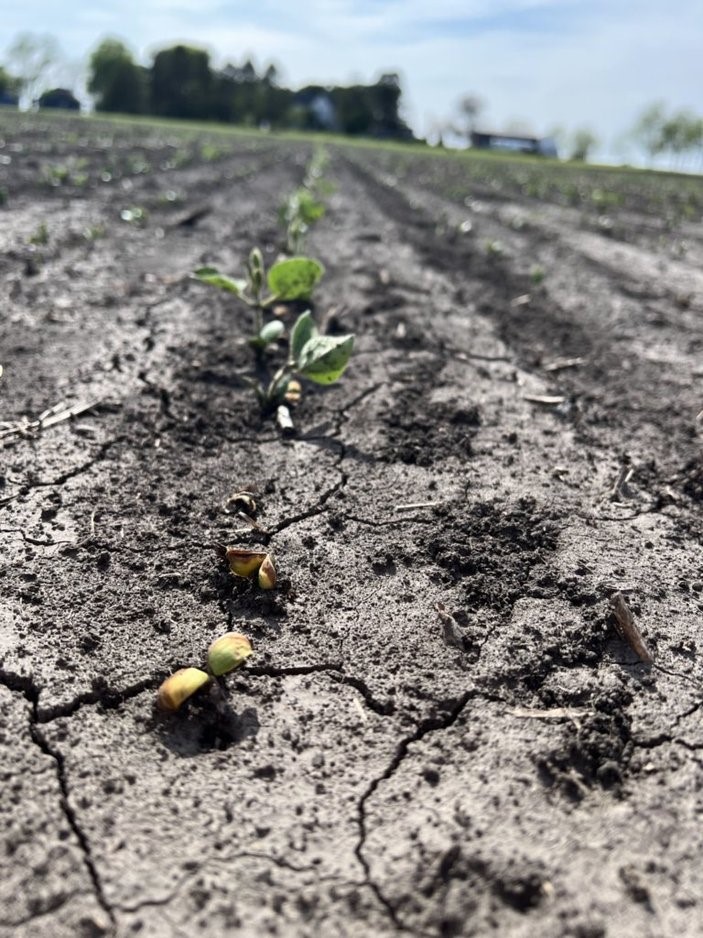I think it is safe to say that many farmers are now planting earlier across Illinois. The first question is how early? I have seen a few planters out or tweets that some have planted soybeans in March and perhaps even February of 2024. From an agronomist standpoint, this seems risky, and in my mind, I hope it was just to test out the planter or try just on a few acres in the name of science. In many parts of the state, the dry fields and unseasonably warm temperatures have brought great temptation to those that could be getting planting fever. The potential for a wet forecast going into April adds even more worry because planting windows seem to become narrower each year.
My general advice has always been that if you think that the “ground is fit” for corn, then you also can plant soybeans. I think the next question has been, “Do you plant before the crop insurance date?” In other cases, dare I say it, hope that if early planting early fails, you can get “free replant” from your seed company. According to 30 planting date trials conducted by the University of Illinois in northern and central Illinois, planting between the second week of April and end of April have delivered maximum yields.
Each farmer should identify the risks of planting soybeans early and then plan accordingly. Not only do decisions need to be made on seeding depth, seed treatment, and populations, but also communication is needed on seed treatment and seed arrival, field, planter preparation, and crop insurance. Some farmers have been planting early soybeans deeper but beware of emergence issues or crusting. Be sure to check the extended forecast for heavy rain, especially if you struggle with field drainage.
I would be more concerned with cold temperatures in the forecast the further north you go and if you are planting into a lighter soil or no-till situation. The first stage of germination is the imbibitional phase, which is the fast uptake of water that usually occurs within the first 24 hours if the soil temperature is kept at 45 degrees F. When it comes to soybean imbibition, the seed quality, treatment, and soil temperature also matter. We don’t want the soybean’s first drink to be below 40 degrees F as this could mean a significant decrease to your final stand. If the soil remains below 50 degrees F, the soybean could remain in the ground for several weeks, but your risk of slow germination, seedling disease, and overall reduced stand establishment increases. Your goal should be to have a final soybean stand of around 100,000 plants/acre depending on soybean genetics and field conditions.
I also want to remind you that we did have a late frost in some areas of the state last year on April 24, 2023. Once the soybean plant emerges, its growing point is above ground. Temperatures <28 F for more than 4 hours can be lethal to the growing point. If the soybean has not emerged yet (sometimes planted deeper), it was able to avoid becoming zapped by the cold, but other soybeans did not avoid Mother Nature’s last cold blast of the season. You can read more about it in the blog, How Frost Affected Soybeans Throughout Illinois.
Soybeans grown in the Midwest are indeterminate, and when the soybean reached the unifoliate stage, it begins to sense night length. Planting in April allows the soybeans to have a longer period of vegetative growth and to absorb sunlight. This is setting them up for more vegetative nodes, which could lead to more pods with more seeds per plant, with seed size determined by genetics as well as late season rains. Early planting also results in an earlier flower or reproductive period, earlier canopy for light interception as well as weed control, and an earlier harvest.
Generally, consider a full maturity soybean variety for your region when planting early. The time spent from flower to full seed will be longer, but speed of soybean growth stages not only depends on planting date and day length, but also on variety maturity, moisture, plant health, and temperature. Many have been experimenting with planting a shorter maturity soybean earlier for marketing incentives or to plant wheat or a cover crop. Be sure that the shorter season soybean variety has been tested or rated for diseases in your environment. Also, make sure that you are aware that a shorter soybean variety that is planted earlier could go through the reproductive stages very rapidly or during times of stress. Lastly, the planting of an early maturity in April could lead to the elimination of the extra nodes, pods, seeds, or overall yield that we so desperately strive for when planting soybeans early.




 and then
and then
A lot of soybeans have already been planted in our area. They are emerging beautifully as of right now. Most have been planted for two to three weeks.